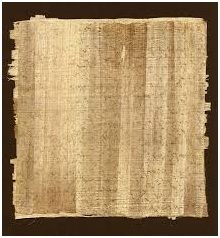A Coaching Model Created by Bana Biri
(Women from the Middle East Coach, CANADA)
Introduction:
As a Resilience Coach, My goal is to focus on helping my clients build resilience. According to the American Psychology Association, Resilience is the process of adapting well in the face of adversity, trauma, tragedy, threats or significant sources of stress — such as family and relationship problems, serious health problems or workplace and financial stressors. It means “bouncing back” from difficult experiences.
My Niche:
I work with women from the Middle East, where their societies are still conservative to an extent, I work with those who want to achieve away from stereotyping, having to play the roles of the mother and wife only. Those who dared to dream and want to achieve regardless of their social pressure, challenges and previous failures. I want to help them build authentic confidence, rewrite their story, find their voice and speak up in their community, work environment or a relationship.
Why Resilience?
We live in a world where change is the norm and it’s not possible to be protected and isolated from fear, risks, downtimes, death of friends and loved ones, illness, divorce or war and disasters. Resilience will equip us with the tools needed to respond to challenges and adversities. As per Karen Reivich, Resilient people are not afraid of challenges, they succeed in spite of challenges and push themselves to their limits and expand their horizons. That’s why I created REED.
Rationale Behind “REED”:

I was inspired by one of Aesop’s fables “The Oak and the reed”. As per Wikipedia:
there was a strong oak that prides its strength and toughness and mock the reed for their lean and wavy stand. When the storm hits the forest, the wind broke the oak and the reed survived by virtue of its flexibility.
I thought of the REED as a symbol of resilience and flexibility during the storm and being able to get back to its shape after the storm.
 Obviously, Reed is not one type of plants. There are so many types and therefore so many usages! But the oldest usage known in history was Paper reed. Another famous usage was building boats. That was fascinating, I chose reed to remind people to create a story from their adversity and rewrite their own story. It’s also a symbol of the boat that will take them from one bank to another and that is the power of resilience.
Obviously, Reed is not one type of plants. There are so many types and therefore so many usages! But the oldest usage known in history was Paper reed. Another famous usage was building boats. That was fascinating, I chose reed to remind people to create a story from their adversity and rewrite their own story. It’s also a symbol of the boat that will take them from one bank to another and that is the power of resilience.
REED
 Review Reality
Review Reality
After finalizing the coaching agreement, we need to understand the current situation and what’s happening now from an objective perspective. In order to decide on what to do and where to go and how we need to make sure that our assumptions about reality are true and clear. What are the thinking traps, if any? What are the distortions about the client?
Current Reality questions can help them understand where we are starting from. And it can help them assess where they are in terms of their goal and what’s stopping them from moving forward.
Examples of questions can be asked for this purpose:
Express Emotions
It’s important to help the client express their emotions while taking into consideration that coaching isn’t a therapy or emotional healing. Expressing emotions will help the client acknowledge what’s happening within them and release the tension.
As per ICF’s website (2008): ’coaching assumes the presence of emotional reactions to life events and that clients are capable of expressing and handling their emotions. Emotions convey important ‘data’ in reading situations and making decisions (Caruso& Salovey, 2004),
We need to work with the client on the current feelings, how to label their emotions, how they were dealing with them and how they can manage them. Help the client to recognize their own expression of emotions. Here, there will be an opportunity to listen with empathy and validate the client’s feelings.
Questions examples:
Expound thoughts & beliefs
At this stage, We need to explore intentions, motivations and underlying beliefs. We need to help the client figure out, understand or change their beliefs about themselves, others and the future.
And as per resilience pillars and factors, awareness is not enough. It’s vital to consider the following as part of building resilience:
Questions Example:
And we can use the “Five whys” technique to help the client dig deeper within themselves.
Design actions
Designing actions is a vital part of any coaching process. As per the ICF description of Competency #9: Designing Actions. “Ability to create with the client opportunities for ongoing learning, during coaching and in work/life situations, and for taking new actions that will most effectively lead to agreed-upon coaching results.”
In order to achieve a goal, we need to design the action and check how ideas can translate into results. We need to help the client plan and set goals and sometimes create boundaries if needed, and as usual, actions must come from the client, not from the coach. We need to make sure to review what are the limitations and what might come in the way.
It’s very important to remember that the outcome should match the client values and moves them closer to their vision and the motivations are positive. It would be great to help the client increase their energy and enthusiasm during implementation. Later on, Celebrate after accomplishments and learn lessons from failures.
Resources:
https://en.wikipedia.org/wiki/The_Oak_and_the_Reed
http://mires-and-peat.net/media/map13/map_13_01.pdf
https://en.wikipedia.org/wiki/Reed_(plant)
https://www.elbardy.com/site/
https://www.ancient.eu/Field_of_Reeds/
https://www.tandfonline.com/doi/abs/10.1207/s15327965pli1503_02
Coaching and emotions How do_ oaches and coaching school directors engage and think about emotions: https://bit.ly/3407gSn